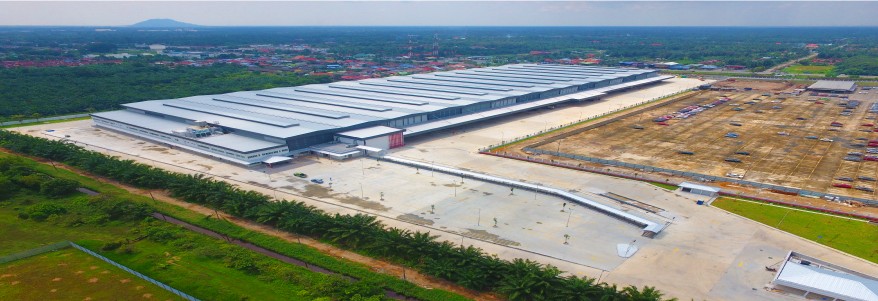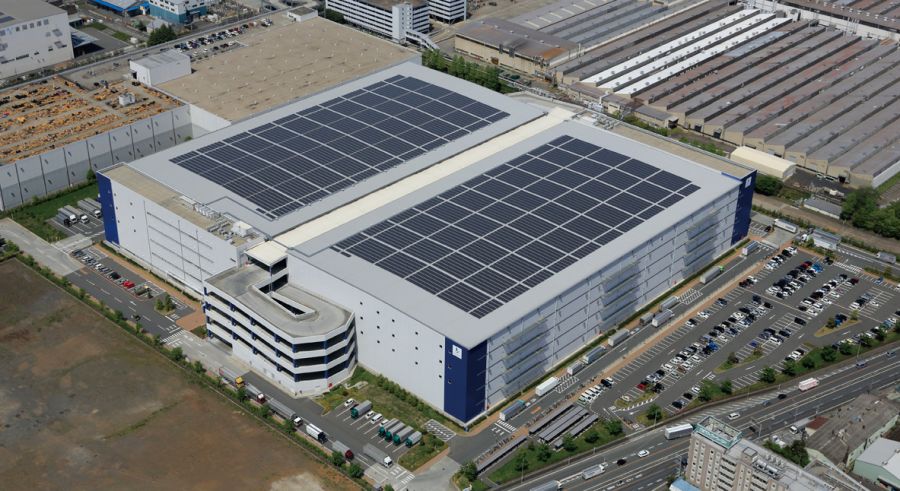A Universal Introduction on Real Estate Investment Trusts Pt. 1

Property investments are always the go-to investment for Asians. This is because Asians look at and value property as if it is made of gold.
Actually, much better than gold. If executed correctly, good quality properties have the potential to generate recurring and increasing rental income.
But here comes the problem. We are aware that the entry barrier to property investing requires a huge amount of money, regardless anywhere you come from. And for the normal ordinary people like you and me, the biggest property that we can ever dip our hands into property investing would be getting a shop lot, which is bigger than a landed house and renting it out.
Or is it?
Enter Real Estate Investment Trusts.
Real Estate Investment Trusts, or better known as REITs, offer ordinary people like you and me an opportunity to invests in huge and lucrative properties. Similar to being a shareholder of a company where you hold a fraction percentage of ownership, REITs let you buy and sell properties on the trading platform. When you buy a REIT, you automatically become one of the co-owners and co-landlords of the particular REIT.
What kind of huge and lucrative properties? Well, something like this?




How does it feel after seeing the potential properties that you could own (fractionally, but still), and with affordable capital requirements?
Before you go barging into this newfound opportunity to invest in properties, it is important to know some basic info. For the first post of the REITs series, let us dive into the various kinds of REITs, and what are the strengths and weaknesses of each kind of REITs.
1. Retail REITs
By far the most common and well-loved REITs of all (except if you are from the US). Retail REITs make shopping malls available to own for retail investors. They are ubiquitous, stable and the ones less impacted by cyclical factors. You can find retail great retail REITs in Malaysia, Singapore and Hong Kong as well since we really love our shopping malls.
Another key advantage a retail REIT has is the location of its shopping malls. Shopping malls like the Midvalley Megamall in Kuala Lumpur, Ngee Ann City in Singapore and Langham Place Mall in Hong Kong are the few examples of fantastic shopping malls situated in prime areas where human foot traffic is abundant. This naturally attracts multiple businesses to set up storefronts in these malls, which would draw more in more foot traffic. As more and more people visit these malls, the demand for rental space will drive rental prices in prime area shopping malls to increase!


Plus with multiple tenants, the concentration risk and dependence for rental on a key anchor is low. Non-performing tenants who evacuate their rental spaces will be quickly replaced by other promising tenants. The creme de la creme of shopping mall REITs can have a 99% occupancy rate!
The only inherent downside of a retail REIT is the short Weighted Average Lease Expiry (WALE). But this would actually be an advantage for the top-performing retail REITs!
2. Commercial REITs
Also known as office REITs, these REITs have properties that are moulded into office buildings. They usually own multi-storey skyscrapers, which can be leased out to a few tenants. Sometimes, the whole building can be leased out to just one big tenant!
Examples of office REITs are Capitaland Commercial Trust in Singapore, UOA REIT in Kuala Lumpur and Prosperity REIT in Hong Kong.

Like retail REITs, commercial REITs also benefit from their location. Office buildings situated in prime business areas like the Central Business District area in Singapore or the Kuala Lumpur City Center usually enjoy a higher rental per square feet. During good economic times, businesses will be sprouting and demand for workspaces will increase. And due to land scarcity in prime areas, plus the long lead time to construct new office buildings, commercial REITs are well-positioned to ride on increasing rental reversion.
But during slowdown times, office building REITs are one of the first to get hit real hard. Unsuccessful businesses will stop renting, and with no new tenants taking over, office REITs can see their occupancy rate plummet, hence impacting their rental collection severely.
3. Healthcare REITs
Hospitals can also be converted into a REIT investment too. They are not common, but they make a great addition to a REIT lover’s portfolio. Luckily we have one Healthcare REIT in Malaysia and one in Singapore. But do you know that the healthcare REIT in Singapore, Parkway Life REIT, is actually owned by a Malaysian company called IHH Healthcare Berhad?


Hospital REITs are special because the competition is less intense than the retail or commercial segment. You seldom find 2 different hospital side by side, and location may not necessarily require a prime area. Plus since the building is built with the requirements to become a hospital, tenants usually are not able to find other buildings to be converted into a hospital. In fact, most healthcare providers directly own the hospital buildings.
The upside of a healthcare REIT? Always 100% occupancy rate (most of the time!). Downside? Highly dependent on the growth of healthcare service providers that own the REITs. Growth is slow but stable.
4. Hospitality REITs
Do not confuse hospitality with the hospital, even though they are different in just 3 alphabets. Hospitality REITs are REITs that have a portfolio of hotels and resorts. Some hospitality REITs own 5-star hotels under the flagship brands like JW Marriott, Pullman, Novotel, Sofitel and many more!


The key advantage of a Hospitality REIT is that it usually is associated with a well-known hotel chain. People who are attached to the JW Marriott hotel’s brand and services would tend to stay at a Marriott hotel no matter where they travel. There is brand equity affixed to certain hotel chains, where customers hold a certain expectation on the level of service every time they book a hotel.
The downside of a hospitality REIT is that business tends to be seasonal. Usually business is good during the school holidays or long breaks, where people tend to take time off to spend time with family or go on a vacation. Hotel operators sometimes have to tweak their average price per night due to the seasonality nature.
5. Industrial & Logistic REITs
One of the less popular REITs. Industrial & Logistic REITs hold a portfolio of properties that function as a factory, gigantic warehouses and also distribution centres.


Sharing a similar advantage to the healthcare REIT, there is a more sticky factor especially for bigger factories. It would be a hassle and very troubling to move the whole plant to a new area with a lower rental. But smaller-scale factories and distribution centres would find it easier to exploit and switch their rental location in the event of a surplus of space supply.
Industrial and logistic REITs rely heavily on the supply and demand factor, and also the macroeconomic factors. In the event of an economic downturn, small businesses tend to go under, quit renting and hence the occupancy rates for these REITs would be heavily impacted.
6. Residential REITs
It starts to get rarer here onwards. Residential REITs, as its name suggests, invests in properties that are for residential purposes. They range from apartment buildings, student housings, or even single-home residential houses.


Certain residential REITs make good investments. Student apartments situated in locations near colleges and universities would always see a continuous demand. Older students graduate, leave their units and their units will be taken up by freshmen.
Of course, that being said, residential REITs are highly competitive. A competitor which can offer better facilities, amenities and a better rental would easily sway tenants away. And the rental increment has to be done at a slower and reasonable pace, which will impede future growth prospects.
7. Miscellaneous REITs
The rarest of them all! For this category, we have Mortage REITs and Golf Trusts.
A mortgage REIT provides financing loans to income-producing properties. They would take over an existing mortgage or buy mortgage-backing securities as an investment channel. The borrower will then every month pay back the loan capital and interest to the mortgage REIT, which will, in the end, pay a distribution to shareholders. In essence, it functions more like a bank, which holds on to the property rights in the event there is a default from its borrowers.
A golf trust invests in lands that are converted to golf courses. Golf players pay to play on a golf course, then the retained profits will be distributed to shareholders.

Of course, being a niche doesn’t directly co-relate to the REITs’ performance. Not many people play golf or are willing to consider mortgage REITs over actual REITs (in Asia generally). And we strongly advise to put in more effort to study special REITs and do the needed due diligence for risks analysis and assessment.
MyKayaPlus Round-Up
There you have it! Our first introductory post that covers the various kinds of REITs that could kickstart your property investments before you earn sufficient capital to buy an actual property under your own name.
Why we went the extra mile to introduce a whole spectrum of REITs? We are seeing more and more email subscribers, Facebook likes and Instagram followers. It is our responsibility and dream to be the one-stop information provider and educators on investing.
Please subscribe to our email list here for special contents not available to our website and social media!
Any comments that you have or new REIT categories that we did not touch on? Let us know in the comments section!






Good writeup